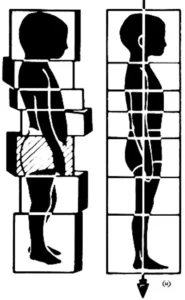
Rolfing Structural Integration®
The terms “Rolfing®” and “Rolfer®” are registered and service marked by the Dr. Ida Rolf Institute.
Rolfing Structural Integration
“It’s not how deep you go—it’s how you go deep.”
– Ida P. Rolf, PhD
Anatomically, Rolfing® addresses the connective tissues of the musculoskeletal system. Rolfing is a body-based therapy system of hands-on manipulation and movement education designed to improve whole body alignment, balance, flexibility, and function. Like a unified web: muscles, fascia, tendons, ligaments, joints, and bones seamlessly attach to each other. Their beautiful interweaving reveals that the whole, truly, is greater than the sum of its parts. Rolfing seeks to return the body to its intrinsic natural order.
Dr. Rolf originally designed Rolfing to function as an adjunct to conventional orthopedics. The orthopedic application of Rolfing is to restore normal range of motion to motion restricted tissues. Used in an orthopedic capacity, it strives to address regional biomechanical issues using practical structural strategies and myofascial mobilization techniques.
Bruce completed his Basic Rolfing training and Rolfing Movement Integration training with the Rolf Institute of Structural Integration in Boulder, Colorado in 1994.
Advanced Rolfing
“Given the choice the body will choose ease over dis-ease”
– Ida P. Rolf, PhD
Advanced Rolfing both complements and departs from basic Rolfing with additional training designed to refine the practitioner’s craft and clinical effectiveness. Advanced Rolfing further deepens into underlying philosophy, palpation, energy, intention, biomechanics, and technique.
If the methodology in the Basic Rolfing style is addressing the body from the outside-in, in terms of reorganizing the body’s fascia, then the methodology of the Advanced Rolfing style is inside-out. They complement each other and are two sides of the same coin.
The goal is to address the body on its own terms. The body’s individual structural needs dictate where and how the Advanced Rolfing work begins. The intention is to start from the area(s) of greatest restriction and/or ADL (Activities of Daily Life) and strategize from there. This approach has both structural and functional components. The core concerns of flexibility, alignment, and body awareness are the same. The inside-out approach is customized to the individual’s body instead of being formula- or recipe-based. Advanced Rolfing addresses what is asymmetrical in the client’s body. Often, similar results to the Basic approach are achieved in less time and fewer sessions using this methodology.
Manual Therapy is the art and science of using hands on manipulation for therapeutic purposes. Advanced Rolfing sees health as a function of all body systems operating and communicating harmoniously. Often a physical restriction in one system of the body affects another system. This is especially true with long-term restrictions that gradually have spread local strain to other parts of the body. At such times, a more comprehensive approach to treating the body is effective for meeting a client’s individual needs.
Bruce has completed the Advanced Rolfing Training three times, including Laguna Beach in 1997 with Jan Sultan, Berkeley in 1998 with Michael Salveson, and he assisted an Advanced Training in Santa Monica in 2001 with Jan Sultan and Michael Salveson. Bruce has audited several additional Advanced Rolfing Trainings in Los Angeles.
Rolfing Movement Education
Bruce completed his Rolfing Movement Integration Training in 1994 in Boulder, Colorado. On the functional side of the therapeutic equation, modifying your Activities of Daily Life (ADL) is a critical component to significantly increasing your odds of hacking chronic orthopedic and/or pain problems. As Dr. Rolf once said, “If you want to change your result, you may have to change your premise.”
Often, the seemingly most mundane or habitual activities are the important places in everyday life where a little movement education and/or ergonomic adjustment can help minimize or eliminate ongoing problems. By discerning underlying structural and postural preferences, one can functionally modify their stretching, strengthening, or training programs to better achieve anatomical balance. Empowering clients to understand how they are doing what they are doing and teaching them to listen to their bodies are crucial steps in helping people to improve their own health.
“I think Rolfing can be a great way to get more in touch with your body and change long-standing problems of bad posture and chronic pain (like back pain). It can also release repressed emotions as well as dissipate habitual muscle tension”
– Andrew Weil, M.D.

